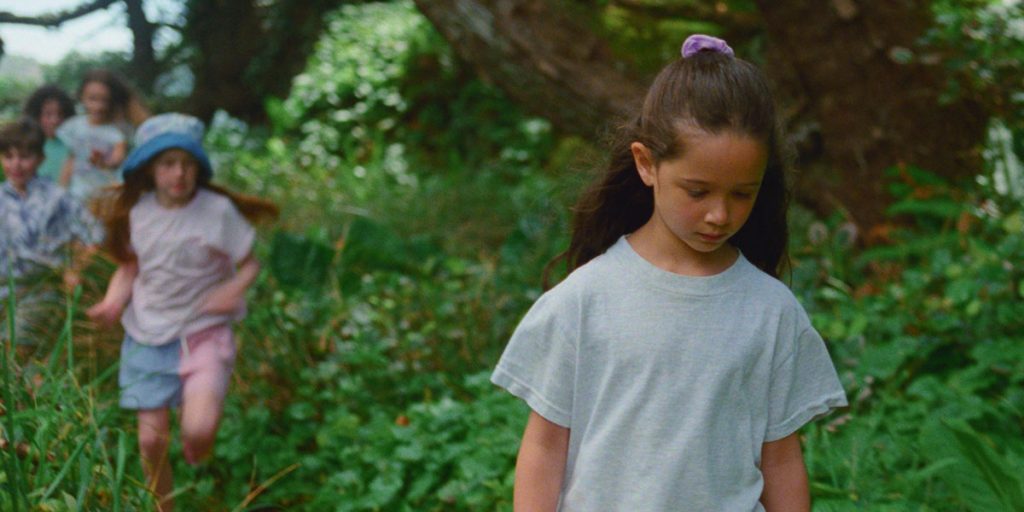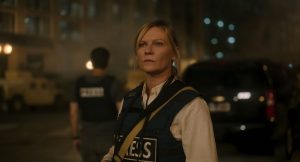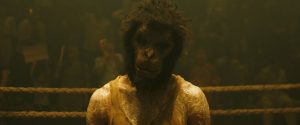Reviews include Irena’s Vow, The Beast, and Before I Change My Mind.
TFCA Friday: Week of Feb. 23
February 23, 2024

Welcome to TFCA Friday, a weekly round-up of film reviews and articles by TFCA members.
ICYMI: We’re profiling the Rogers Best Canadian Documentary nominees ahead of our March 4 Gala. Check out interviews with Swan Song director Chelsea McMullan (by Susan G. Cole), Someone Lives Here director Zack Russell (by Thom Ernst), and Rojek director Zaynê Akyol (by Jason Gober).
In Release this Week
578 Magnum (dir. Dung Long Dinj)
“The well-staged action set pieces and other differences like a plot with more emotional impact involving human courage make this Vietnamese action film stand out,” writes Gilbert Seah at Afro Toronto.
Apolonia, Apolonia (dir. Lea Glob)
“Apolonia, Apolonia observes how art isn’t a quick and dirty process, but rather something that evolves through time and experience. It’s a portrait of sticking to it and seeing the work through, and giving something of oneself in the process. While making portraits of so many people throughout her life, it’s perhaps only appropriate that the best portrait to which Sokol’s committed has been one of herself—by an artist who truly gets her,” writes Pat Mullen at POV Magazine.
Bring Him to Me (dir. Luke Spark)
“The film is aided by the fact that it contains two likeable characters, one veteran who can stand no nonsense and the other, a kid who is nothing but nonsense,” says Gilbert Seah at Afro Toronto. “The two opposing personalities make good chemistry as crime partners.”
Drive Away Dolls (dir. Ethan Coen)
“Go with it, and it’s a fun, flimsily light romp. And if you think of Coen films that can be described as ‘fun’ (e.g. Raising Arizona, The Big Lebowski, O Brother, Where Art Thou?), you might assume they bear the fingerprints of younger brother Ethan,” observes Jim Slotek at Original Cin. “It’s probably not as simple as that…Whatever the reason, the brothers are apparently working together again, at least on a script. In the meantime, I’m glad they made the movies they did. Macbeth was artful and haunting. And Drive-Away Dolls is quick and dirty (84 minutes) and has some decidedly unsophisticated laughs.”
“The ultra-quirky gangster antics are criminally stale, as if resurrected from a deservedly long-lost first treatment of Raising Arizona,” sighs Barry Hertz at The Globe and Mail. “And the big briefcase mystery climaxes on a flaccid reveal that hints at what must be Joel’s stabilizing force when it comes to the siblings’ arrested-development juvenilia. The great gag behind Lebowski’s Jackie Treehorn might have involved a penis joke, but it was a penis joke with tumescent flair.”
“This screwball comedy/queer road movie is rude, raunchy and ramshackle, with large amounts of nudity and sex, and the most absurd MacGuffin since the Dude’s urine-soaked rug in The Big Lebowski. I intend no insult. Drive-Away Dolls is mostly a hoot, and also a reassuring wink from Ethan that at least one of the Coen Bros. hasn’t forgotten fans of the Minnesota siblings’ acerbically eclectic cinema,” writes Peter Howell at the Toronto Star. “If you’re looking for a message in Drive-Away Dolls, apart from the pleasure of watching the kooky chemistry of Qualley and Viswanathan, you’ve come to the wrong highway.”
History of Evil (dir. Bo Mirhossen)
“History of Evil is a credibly scary horror film in a political setting in which the horror exists in both human and supernatural form,” writes Gilbert Seah at Afro Toronto. “Director Bo creates an intimidating atmosphere a family has to overcome to survive as a family unit. Unfortunately, the film does not come together as a whole, as the supernatural portion that occurs only during the last third of the film makes little sense.”
I Didn’t See You There (dir. Reid Davenport)
“Davenport, who has cerebral palsy, has made a series of short films over the past decade about disability before this first feature, which blends autobiographical, experimental, and historical elements in a casual film diary format,” writes Liam Lacey at Original Cin. “In juggling the beforementioned autobiographical, experimental, and historical elements, I Didn’t See You There can feel scattered and somewhat distant, no doubt due to Davenport’s disinclination toward treating his disability as a commodity. But the thematic strands resolve effectively in two climactic moments, one loud and one quietly ironic.”
Io Capitano (dir. Matteo Garrone)
“Still, despite its flaws of the abrupt open ending, Garrone’s film is well researched, harrowing in its depiction of the joinery while keeping on its theme of the triumph of the human spirit,” observes Gilbert Seah at Afro Toronto.
“It is a frequently brutal, often riveting experience, with Garrone expecting if not demanding endurance of his audience,” writes Barry Hertz at The Globe and Mail. Hertz also speaks with Garrone about bringing this Homeric odyssey to the screen. “Those moments give an opportunity for the audience to breathe,” Garrone tells Hertz about the film’s use of magical realism. “And when writing it, I wanted to show the inner feelings of Seydou. This is a coming-of-age story about a boy who becomes a man, but through his traumatic journey. So I wanted the audience to see what’s inside his mind, these wounds of the soul.”
“Io Capitano is a heroic tale that depicts a young man coping with the harsh realities of illegal emigration, emerging through it all, as a grown man, able to take care of riotous passengers and a sick, pregnant woman, despite a total lack of education in how to pilot a ship,” notes Marc Glassman at Classical FM. “Seydou Sarr is astonishingly good as the film’s young protagonist: charming with women, fearful but restrained when dealing with tough, angry men and immensely appealing as someone with hidden resources who can rise to the occasion–whatever it is–when needed. As his impulsive best friend and cousin Moussa, Moustapha Fall is likeable and persuasive—although it’s a stretch that he can pilot the ship, sick and ill-equipped as he is, when Seydou must deal with the acrimonious passengers at one critical point.”
Mea Culpa (dir. Tyler Perry)
“What makes this comedy work is that it deals with down-to-earth issues that audiences can relate to,” admits Gilbert Seah at Afro Toronto. “Issues like husband and wife quarrels, mother-in-law problems, job conflicts of interest and feminine issues are all treated to the typical Tyler Perry humour. His films mightn’t win awards for artistic merit (though his films have won a few BET awards), but they are always entertaining to watch, Mea Culpa included.”
The Monk and the Gun (dir. Pawo Coying Dorji)
“A crowd-pleasing satire from a refreshingly remote corner of the world, The Monk and the Gun — from director Pawo Coying Dorji (Lunana: A Yak in the Classroom) — is set in the Himalayan nation of Bhutan in 2006, a couple of years before the king abdicated to make way for a democracy,” says Liam Lacey at Original Cin. “Fans of action films as Top Gun, American Sniper or Hobo with a Shotgun may be disappointed by the absence of splatter, though The Monk and the Gun achieves its own kind of sardonic catharsis.”
“One thing director Pawo portrays is the naivety of the Bhutan people to the point of spicily and occasional ignorance of the ways of the west. But he also shows with the naivety comes innocence, sincerity and human goodness,” says Gilbert Seah at Afro Toronto.
“[G]enius – a compelling, exciting story, the opportunity to experience life in a far distant country with a vastly different culture than our own, and the mischief fate concocts, and a keen sense of wonder and humour. It’s 2006 Bhutan, internet and television are finally available,” notes Anne Brodie at What She Said. “We see a country change and maintain its true nature against outsider interference and rediscover the Western problem with greed, with heart to spare. I’ll give it ten out of five stars.”
Queen Tut (dir. Queen Morsi 🇨🇦)
“The ‘Queer Revolutionary Drag Dramedy’ Queen Tut, shot in Toronto’s Gay Village is a heartwarming, inspiring look at connection, family, and change, from Egyptian-Canadian director Reem Morsi,” notes Anne Brodie at What She Said. “The sensitivity of the script and performances is boosted by positive messages of inclusion, community, and the courage to fulfill one’s destiny. Mandy’s circle is a lively, supportive bunch that carries one another and supports Nabil on his journey to fulfillment. Billings, a multi-award-winning film and theatre actor is especially magnetic.”
“It is easy to sympathize with director Reem Morsi,” admits Barry Hertz at The Globe and Mail. “It is clear the budget was incredibly low, and only some of her performers (most notably Billings, who is operating on another level here) were attuned to the particular challenge. But to perhaps unfairly contrast it with Sophie Dupuis’s feature Solo from just a few months ago – another family melodrama set against the backdrop of a major Canadian city’s drag scene – and there is no question that Queen Tut falls considerably short of the basics. There is passion, but no rhythm.”
Seagrass (dir. Meredith Hama-Brown 🇨🇦)
“The spiritual presence in the film is oblique, guided largely by Emmy’s panicked belief that she accidentally summoned her grandmother after visiting the cave. Hama-Brown’s attention to women, lineage and hand-me-down worry is deeply felt and encourages a reading of the film that moves beyond static notions of generational trauma,” observes Saffron Maeve at The Globe and Mail. “There is a sense that understanding one’s identity is an equally corporeal and emotional experience; we see each of the three girls overcome with realization while dancing – Judith at a bar, Stephanie at a house party and Emmy in a particularly affecting moment, where she breaks into tears performing a dance routine to ‘Seasons in the Sun’ by Terry Jacks, which is, lyrically, a valedictory gesture of a man about to die.”
“Director Hama-Brown steers her relationship family drama into its emotional climax that includes a little suspense to boot in what can be termed s meticulously crafted gem,” says Gilbert Seah at Afro Toronto.
“Meredith Hama-Brown’s excellent debut feature film, Seagrass, a hit at TIFF 2023, stars Ally Maki and Luke Roberts as Judith and Steve, Chris Pang, and Sarah Gadon as Pat and Carol,” says Anne Brodie at What She Said. “[Judith] takes some wild swings, gets drunk and abusive at a pool hall, and picks a fight, while her husband joins a therapy group, and ponders his life without her. Meanwhile, she’s making out with a man and screaming at the girls. An unsympathetic character leads the film and smart scripting, with fully realised portraits of folks at the end of their tethers tugs at us. It’s jarring, a rich and unconventional film about family. The daughters Stephanie and Emmy, played with extraordinary suppleness by Nyha Breitkreuz and Remy Marthaller feel startled, unsafe, and unloved. These young characters deserve better.”
“The adults are the main event in Seagrass, but the beauty of Hama-Brown’s film is in everything going on around the edges, specifically with Judith and Steve’s children, adolescent Stephanie (Nyha Huang Breitkreuz) and six-year-old Emmy (Remy Marthaller). The world looms large to children, and the children’s experience of their parents’ unhappiness highlights the deeper damage being done,” writes Liz Braun at Original Cin. “Seagrass is permeated with anxiety, most of it stemming from the kids’ point of view. The wild landscape of the island they’re visiting, for example, includes forbidding-looking caves at the edge of the ocean. Emmy believes the caves to be haunted.”
“Meredith Hama-Brown has crafted a film that explores the emotions of a dysfunctional family in a caring, intimate way,” notes Marc Glassman at Classical FM. “Like a novel, this character laden drama moves carefully from scene to scene, building up our concern for every member of the family. We see Judith struggling with her identity, finding herself ashamed of how little she knows about her parents’ confinement in the notorious Japanese internment camps during the Second World War.”
Suze (dir. Dane Clark, Linsey Stewart 🇨🇦)
“Watkins…locates and broadcasts that very discomfiting sense people at midlife often feel when it dawns on them that they really don’t have everything figured out, a situation here compounded by an empty nest with a silence that roars,” notes Kim Hughes at Original Cin. “Suze is also sharply written. In one choice scene highlighting Susan’s frustration with Brooke’s inaccessibility, we get this: ‘Hi honey. Why don’t you take that little phone that is glued to your little hand and bring it to your little ear and fucking call me for five fucking seconds because I’m your fucking mother and it’s the least you can do for the woman who laboured for 22 fucking hours and tearing up her… BEEP. ‘The mailbox is full and cannot accept messages at this time. Goodbye.’”
“Gage is a big-hearted kid, sensible, empathetic, and just needs parental guidance and love; Suze becomes his ersatz mother,” writes Anne Brodie at What She Said. “They pay a surprise visit to Brooke, and she berates them and storms off. And then comes the chance to change. This is a heartfelt, funny and deliciously bittersweet character study of a woman who has to please everyone, a daughter who needs to cool it, and a loser who finds his way.”
Stop Motion (dir. Robert Morgan)
“Director Morgan ups the ante in creating a scary gothic atmosphere by the use of multiple techniques including thumping and screeching sounds, colours, odd image and innovative camera angles. Filming locations include director Morgan’s sitting room,” notes Gilbert Seah at Afro Toronto.
Youth / Spring (dir. Wang Bing)
“There is no story or narrative but what occurs onscreen tells more stories about human youth than anything else,” admits Gilbert Seah at Afro Toronto.
“Drawing from over 2,600 hours of footage and telling the first stories of an intended trilogy, Youth reflects its immersion in its environment. The characters are comfortable with Bing’s camera, open, and candid,” writes Pat Mullen at POV Magazine. “They’re simply too busy to be bothered by the fly on their wall, but their trust in Bing affords the film extraordinary access. Every moment of their lives on and off the workshop floor is on the table.”
File Under Miscellaneous
At The Globe and Mail, Barry Hertz delivers an oral history of Cinema Scope as the venerable Canadian magazine publishes its final issue. The tale includes Clyde Gilmour Award winner Mark Peranson and voices from around the world: “Somehow we got copies out during TIFF that first year, and decided to keep going. I borrowed money from my father, which I paid back eventually, but you can’t get government grants until you show that you’re serious about publishing. The only way this magazine could survive that first year was to do it without making any money,” says Peranson. “I’m proud that I outlasted NOW Magazine. You can print that.”
At POV Magazine, Pat Mullen checks in with To Kill a Tiger director Nisha Pahuja to learn about the long road to her well-earned Oscar nomination. “And yet despite the critical acclaim, accolades, audience reception, and varied crew of notable supporters, To Kill a Tiger remained a tough sell. Canadian media rarely picked up news about the home team and U.S. distributors gave mixed offers. ‘For social-political documentaries, there are not many homes for them any longer,’ observes Pahuja. ‘There was substantial interest in the film in the United States, but I felt that my vision for the film and my idea of what the film could accomplish were sometimes at odds with what was being offered to me. It felt smarter to go it alone.’”
At POV Magazine, Rachel Ho profiles cinematographer Iris Ng. “When Raymond Moriyama designed the Ontario Science Centre in the late ’60s, he incorporated Confucian teaching philosophy into the layout, explaining that Confucius said, ‘When you hear, you forget; when you see, you remember some; but when you touch and do, it becomes part of you,’” writes Ho. “In a similar way, though film may lack this tactile quality, Ng’s camera, driven by a desire to shape our experience, forges a textured visual language that enriches and enlivens stories such that we as viewers become a part of the film’s journey.”
TV Talk/Series Stuff
At What She Said, Anne Brodie ventures off with the epic adaptation Shogun: “It’s a dense and fascinating political actioner and the cinematography, angry natural seaside landscape, and art direction are superlative.” Meanwhile, she says “Brenda Blythen remains unmatched” as a detective in Vera, which returns for another season.



